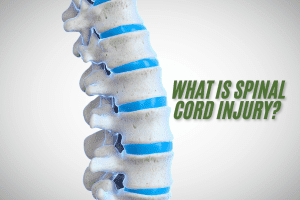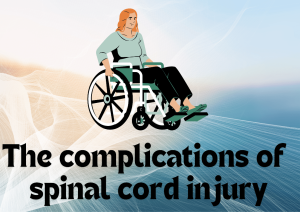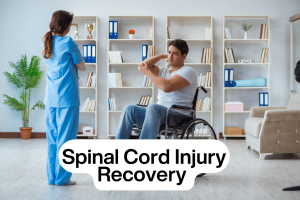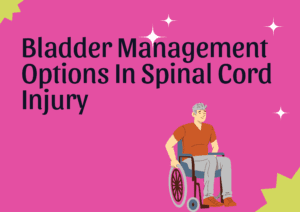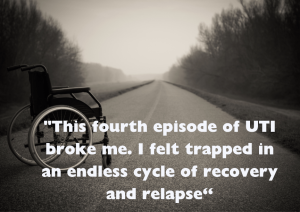
By Scihealthhub – October 8, 2024
In this article, we aim to explore the rapidly evolving landscape of spinal cord injury treatment.
Spinal cord injury (SCI) is a devastating and life-altering event that affects about 15 million people worldwide, according to a 2021 report.
The sudden loss of movement, sensation, and independence can be overwhelming, leaving affected individuals and families searching for hope and effective treatments.
While there is still no definitive cure, advances in medical research and technology have led to significant improvements in both current and future spinal cord injury treatments.
This article highlights the most effective current treatment approaches and looks into the future, examining promising treatments and emerging technologies that may one day transform the lives of individuals living with spinal cord injury.
The Current Spinal Cord Injury Treatment Approach
The current approach to managing spinal cord injury involves several important steps, including:
1. Immediate Action (First Aid) for Suspected Spinal Cord Injury
Certain immediate actions must be taken if rescuers suspect someone has sustained a spinal cord injury.
But first, under what circumstances should you suspect an individual may have a spinal cord injury?
Consider spinal cord injury in cases of traumatic injury if:
- The person complains of severe pain in the neck or back.
- The person experiences weakness, loss of movement, or numbness in the limbs.
- There is loss or reduced consciousness.
- The person’s neck or body is positioned abnormally.
If you suspect a spinal cord injury, consider the following immediate actions:
- Ensure safety: Make sure the person is safe from further harm.
- Call emergency services: Get professional help immediately.
- Avoid moving the person, as this can worsen the injury and result in permanent paralysis. If it is absolutely necessary to move the person, follow proper guidelines (see transportation below).
- Transportation: The person should be transported to a hospital, often a trauma center, for specialized care. During transportation, keep their neck and back as straight as possible using a rigid neck collar and a rigid carrying board. If a neck collar is not available, use towels or clothing to stabilize the head and neck.
2. Emergency Hospital Care
At the hospital, healthcare professionals will:
- Resuscitate as needed with airway management, supplemental oxygen, and fluid replacement.
- Monitor blood pressure and other vital signs.
- Assess the injury using imaging tests like X-rays, CT scans, or MRI.
- Consider steroid therapy: Methylprednisolone was once commonly used in the early hours after an injury to reduce inflammation, but its use has become controversial due to conflicting evidence of harmful side effects versus clinical benefit. The current recommendation is to treat all persons with spinal cord injury according to local/regional protocols. If steroids are recommended, they should be given within 8 hours of injury.
- Insert a Foley catheter to monitor urine output and empty the bladder.
- Consider surgery: Surgical intervention may be necessary to remove bone fragments, foreign objects, or stabilize the spine with metal rods.
- Manage bowel function appropriately.
- Take measures to prevent pressure sores by turning the person every 1–2 hours.
3. Rehabilitation
Rehabilitation is a cornerstone of spinal cord injury treatment. It involves:
- Physical therapy to improve muscle strength and flexibility.
- Occupational therapy to help patients regain independence in daily activities. The person will have to learn new skills for daily activities (e.g., transfers, dressing).
- Psychological support to help cope with the emotional challenges of spinal cord injury.
The goal of rehabilitation is to maximize the patient’s abilities and improve their quality of life.
4. Assistive Devices
Technological advancements have led to the development of various assistive devices.
- Wheelchairs have become more advanced, with options that allow users to stand, recline, or even navigate stairs.
- Braces and orthoses may be used for positioning a hand, arm, or leg, or to improve function.
- Individuals with speech difficulties may benefit from a speech-generating device.
- Smartphones and other assistive equipment can help people use computers and remote controls at home, allowing them to live more independently.
5. Long-Term Management
- Preventing complications: Regular checks for issues like pressure sores, bladder infections, or respiratory problems.
- Lifestyle adjustments: Adapting the home and daily activities to meet the person’s needs.
- Support systems: Ongoing support from healthcare providers, family, colleagues, and possibly peer support groups. The individual needs support to return to school or work.
Future Treatment Options
Although there are currently no known ways to reverse spinal cord damage, scientists are working on new treatments, including prostheses and medications, which may promote nerve cell regeneration or improve the function of remaining nerves.
1. Regenerative Medicine
One of the most exciting areas of research is regenerative medicine, which aims to repair or replace damaged spinal cord tissue. This includes:
- Stem cell therapy: Scientists are exploring the use of stem cells, which can develop into different types of cells, to regenerate damaged nerve cells in the spinal cord. Early trials have shown promise, but more research is needed to ensure safety and effectiveness.
- Gene therapy: This involves introducing new genes into spinal cord cells to promote regeneration and repair of damaged tissue. Gene therapy is still in the experimental stages but holds great potential for the future.
2. Neuroprosthetics
Neuroprosthetics are assistive devices that bypass the spinal cord injury site to activate functional circuits below the injury, helping restore lost functions. These devices are implanted in the brain or spinal cord to provide direct electrical stimulation, potentially restoring some voluntary movement or other functions. Early studies show promise for this engineering approach in treating individuals with spinal cord injury.
3. Pharmacological Advances
Scientists are developing new drugs that could help repair the spinal cord or protect it from further damage. These drugs may work by reducing inflammation, promoting nerve growth, or preventing scar tissue formation, which can block nerve signals.
4. Advanced Robotics and AI
The future may also bring advancements in robotics and artificial intelligence (AI) that could dramatically improve the lives of those with spinal cord injuries. For example:
- Robotic Exoskeletons: These wearable devices use AI, sensors, and actuators to enhance or restore human movement. They can help individuals with spinal cord injury stand, walk, and move with greater ease and independence. Other benefits include increased muscle strength, stronger bones, and pain reduction. Examples include ReWalk, Ekso Bionics, Indego, Rex Bionics, and HAL (Hybrid Assistive Limb).
- AI-Enhanced Rehabilitation: AI could personalize rehabilitation programs, making them more effective by adapting exercises in real-time to match the patient’s progress.
Conclusion
While there is no definitive cure for spinal cord injuries, current and future treatment options can significantly improve the quality of life for affected individuals, helping them live more independently. Ongoing research and technological advancements provide hope for better treatments and potentially even a cure in the future.
If you liked this article, please press the subscribe button. Kindly share this post and follow our social media handles. Feel free to drop your comments or questions.

